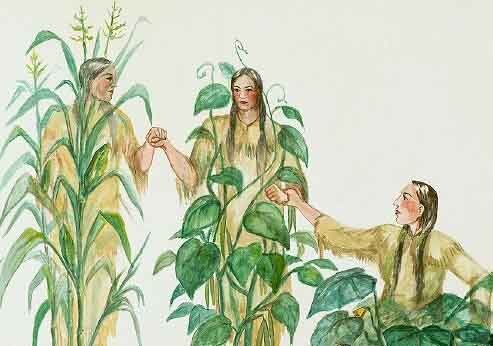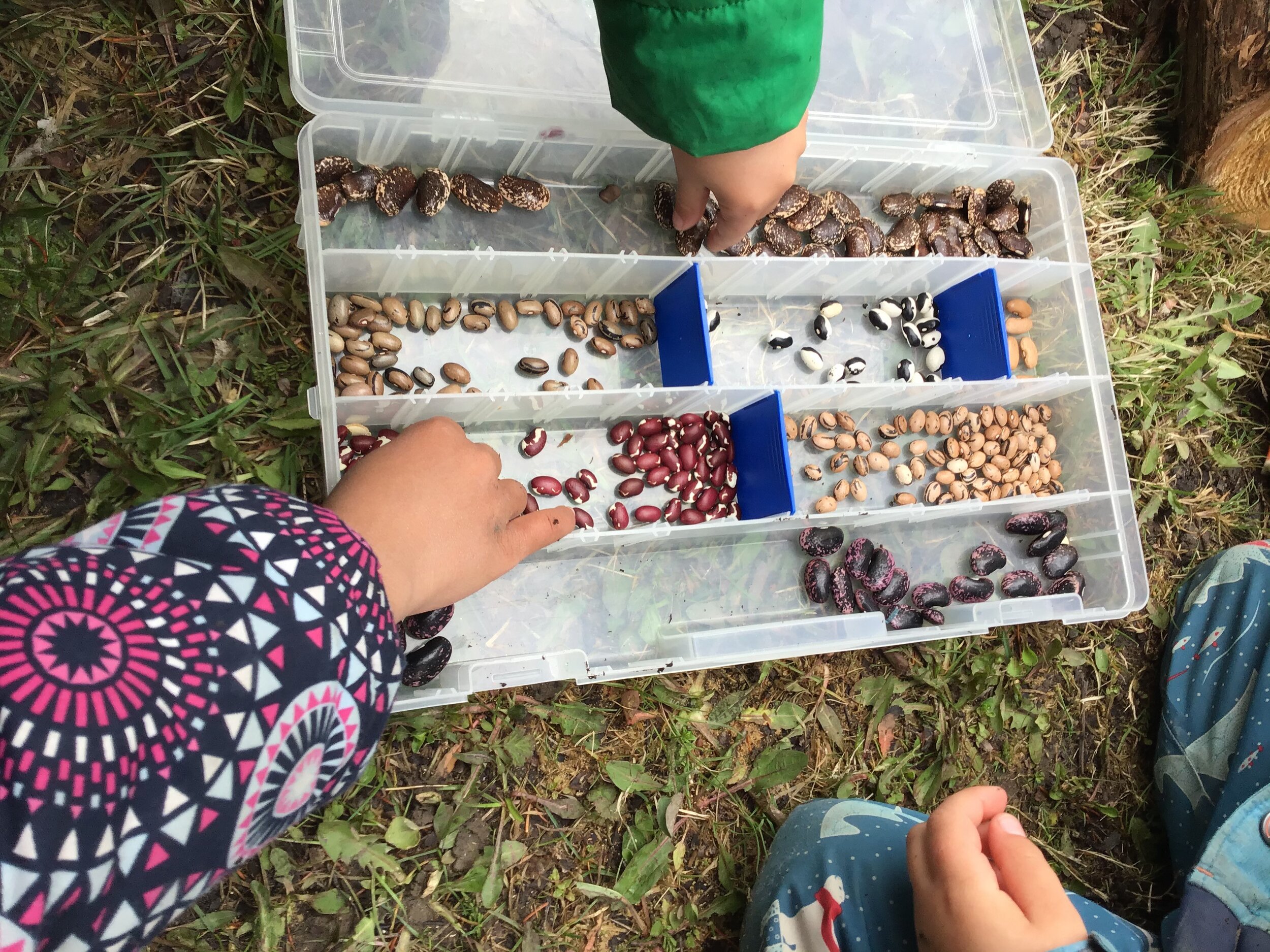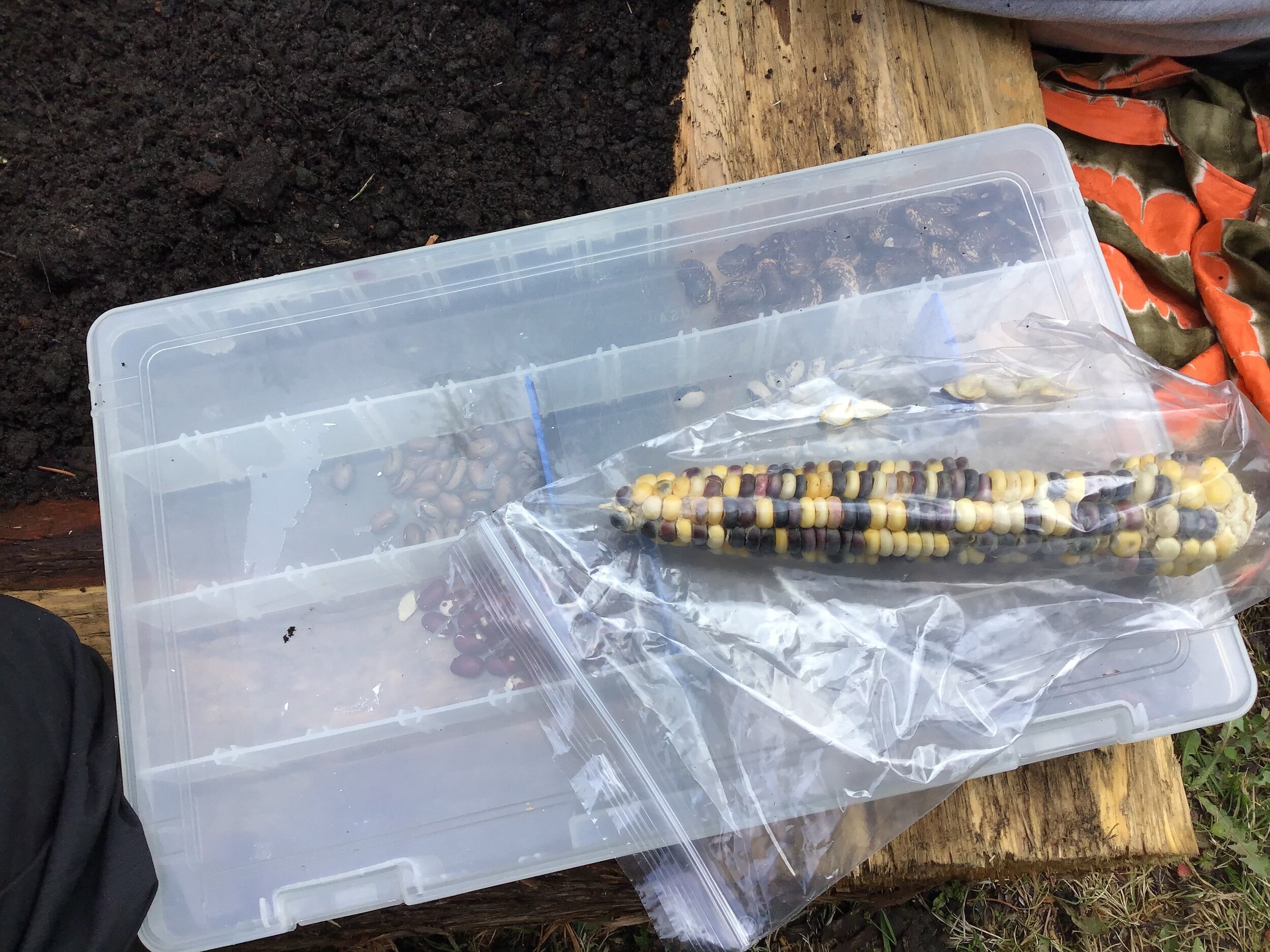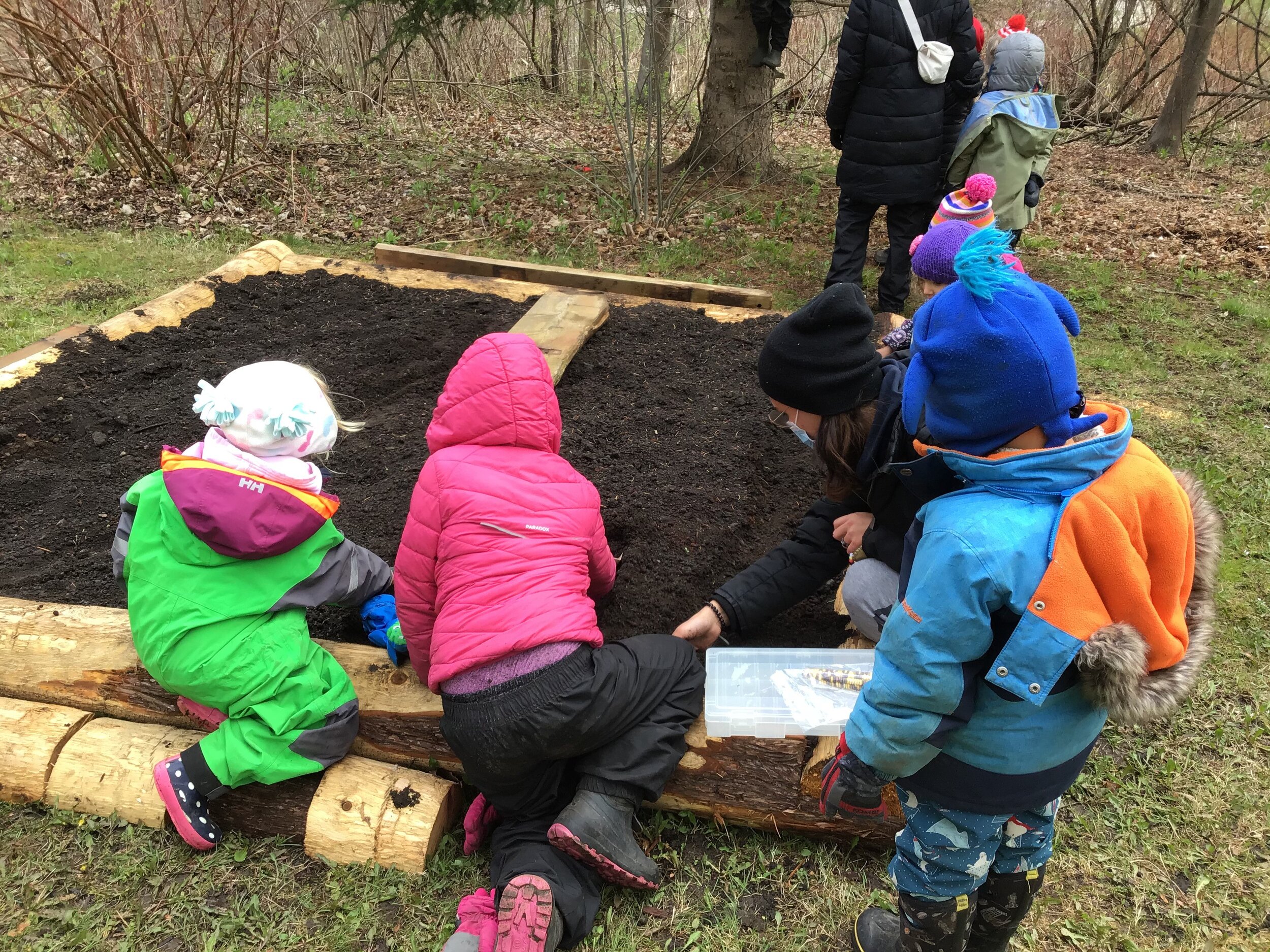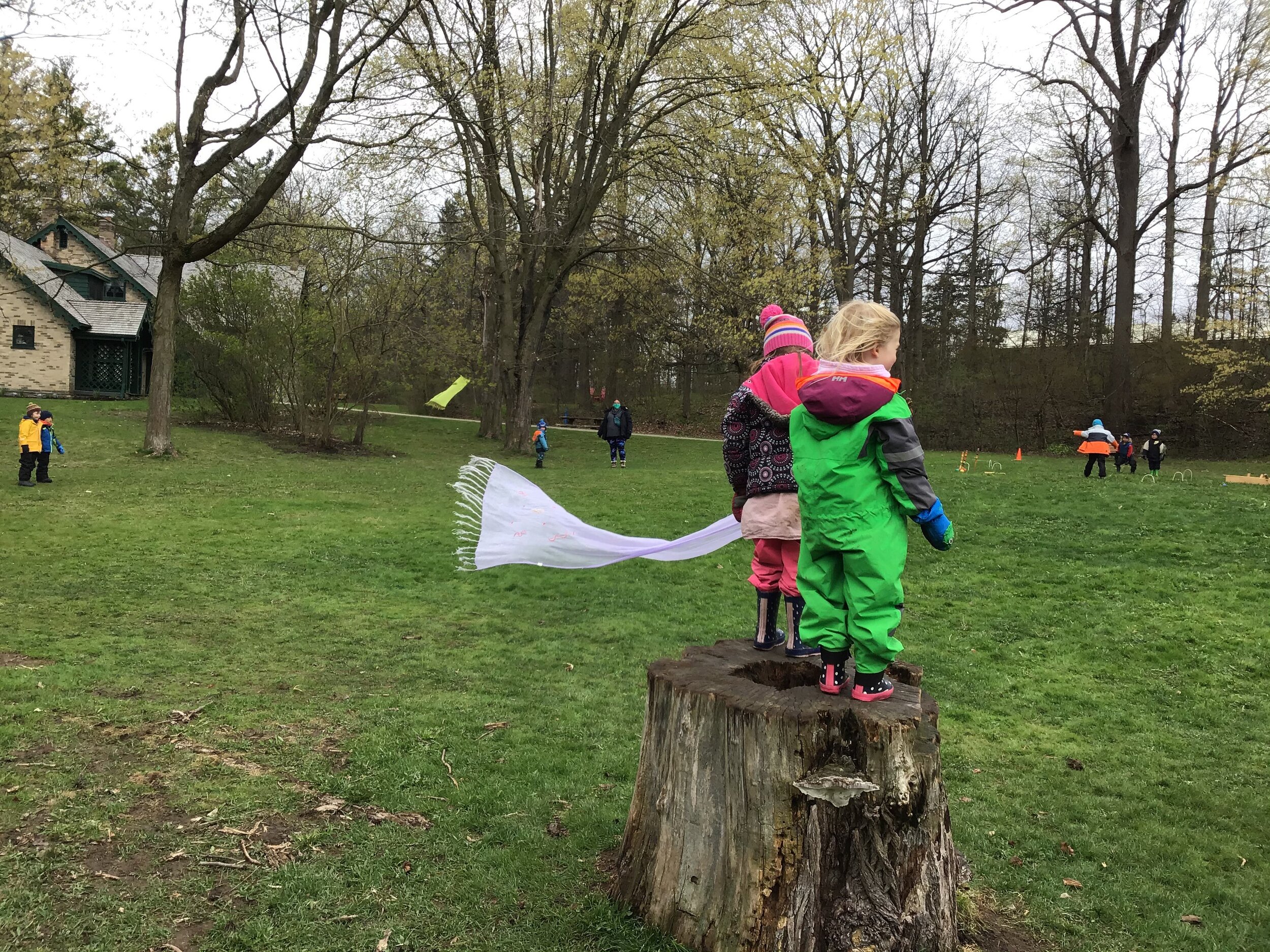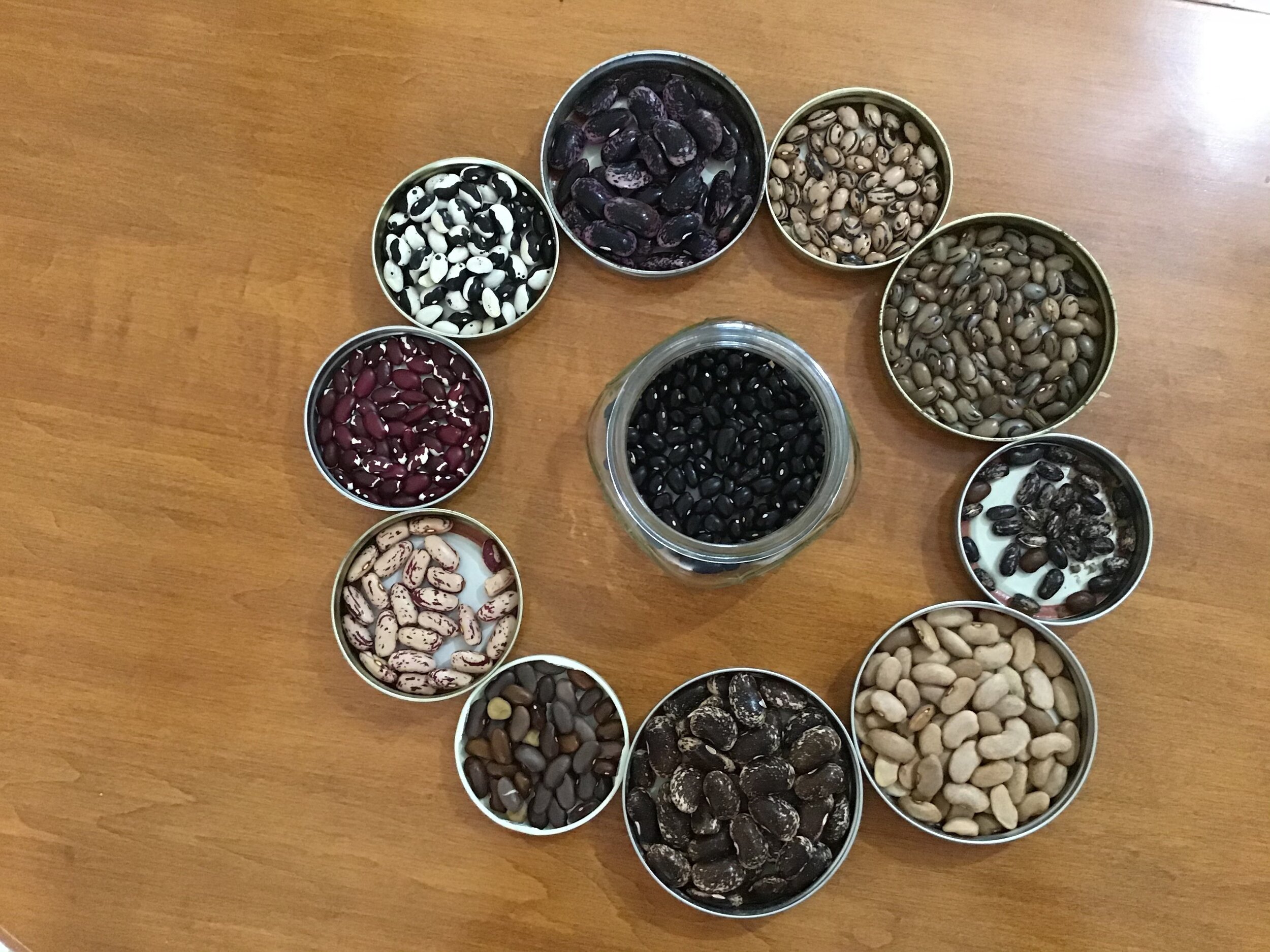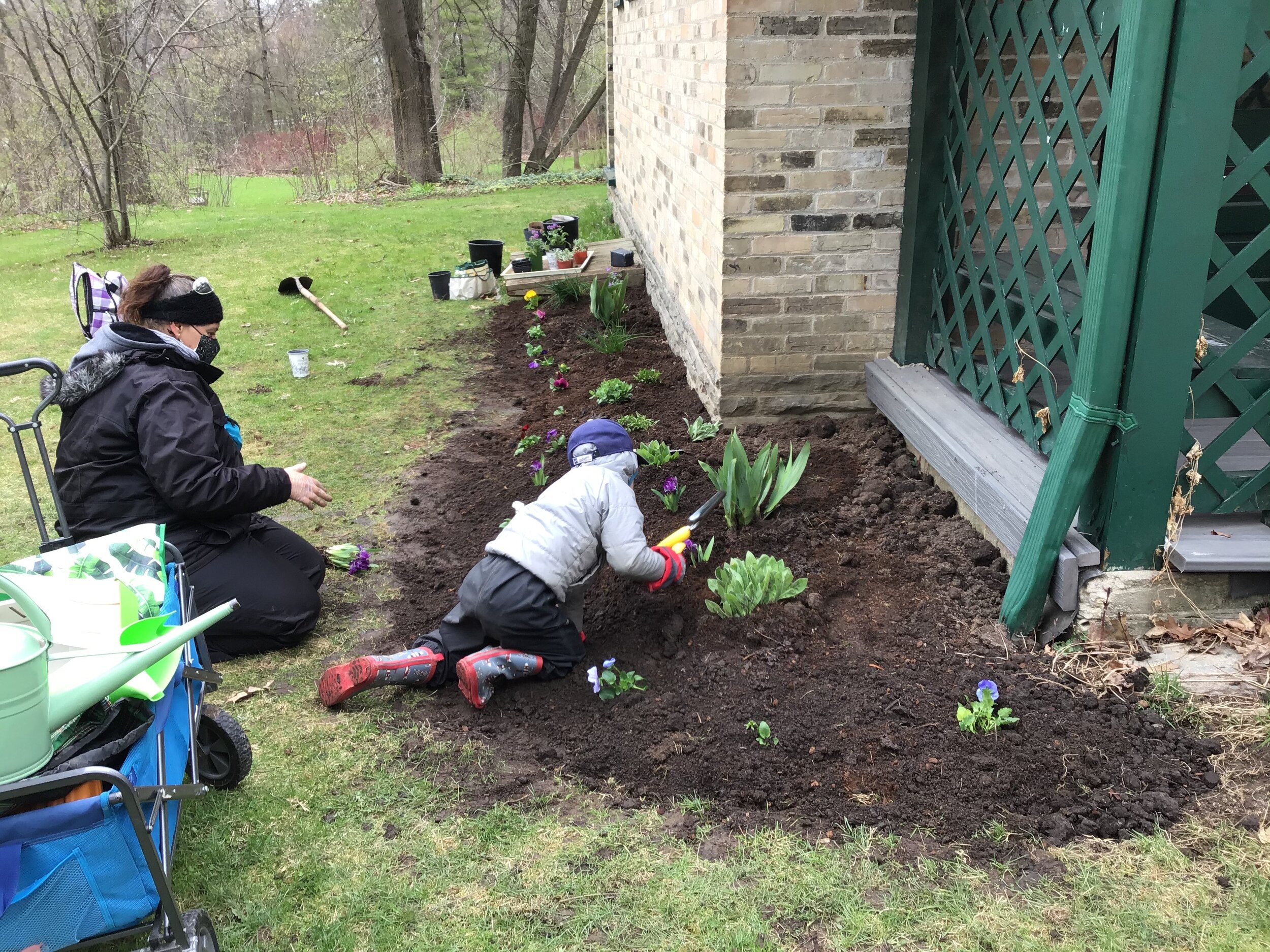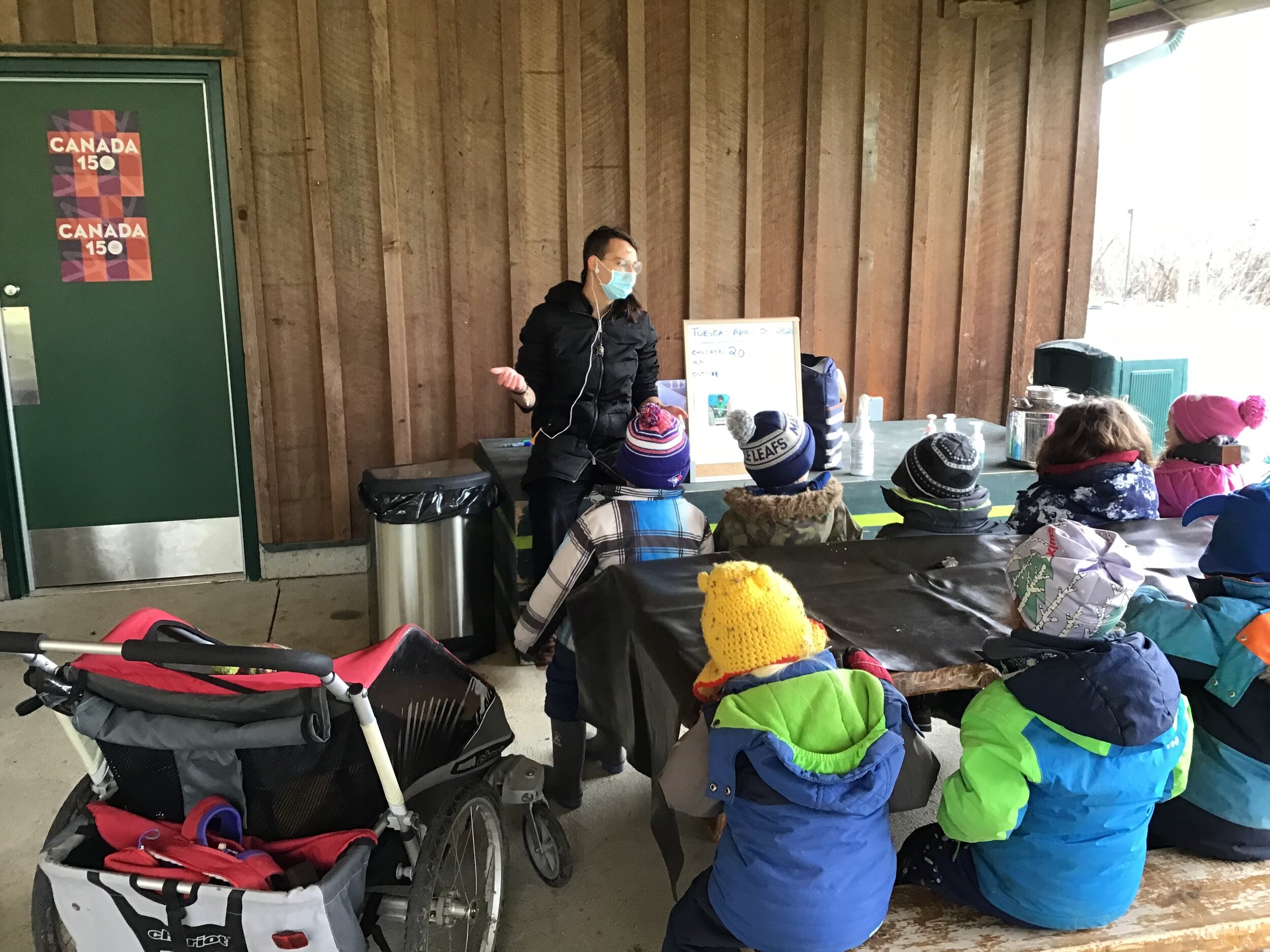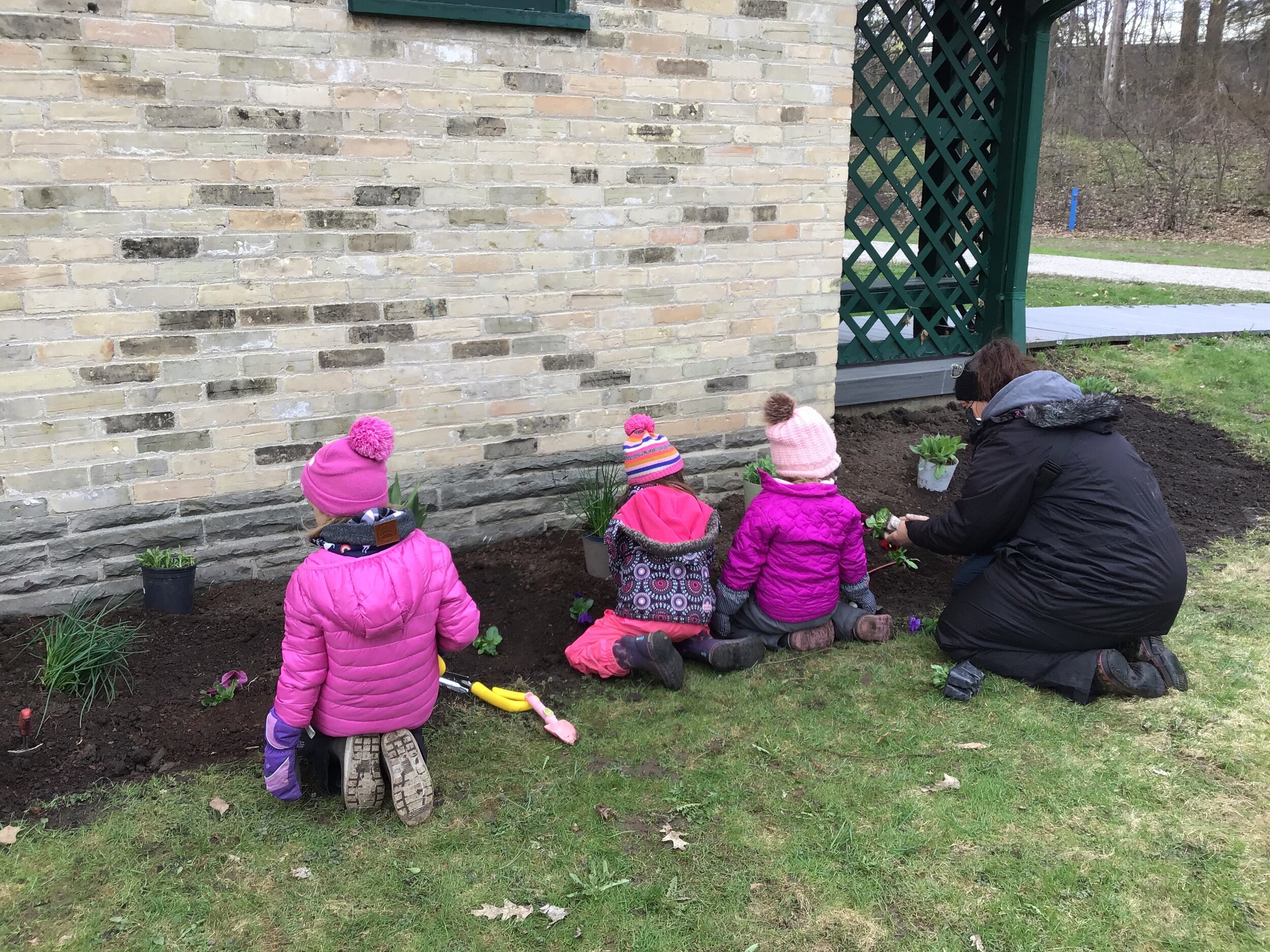Three Sisters Planting at Woodside National Historic Site with Dewe’igan
Forest and Nature School’s Head, Heart, Hand approach encourages us to explore, experiment, discuss, form theories, and express our creativity as we are inspired to learn outdoors. Gardening curriculum is a long term, systemic, hands on approach that encourages learners to explore, observe, plan, calculate, celebrate, engage with, and understand growth processes. Gardening connects us to science, food sovereignty and sustainability. Please explore: https://www.regionofwaterloo.ca/.../SchoolGardens....
Learning about cyclical growth patterns, seasonal changes, companion planting, encourages us to form personal connections to the natural world. Following the growth cycles of the seeds we planted in relation to time, weather, and our input will support our systemic thinking.
Dewe’igan guided us through the Three Sisters Planting process with stories and teachings about the complex agricultural-sciences practiced by Indigenous Nations for millennia. Corn, Beans and Squashes are gifts from The Indigenous Nations of Turtle Island that support humanity all around the world. The Three Sisters are an perfect example of the principles of companion planting.
Dewe’igan introduced us to companion planting through the story of The Three Sisters and described the relationship among the plants, and the specific ways they support each other’s growth.
Nia:wen, many thanks, to Terrylynn Brant and the Mohawk Seed Keepers’ from Oshweken (https://www.facebook.com/groups/846377065399516/) the seeds we planted are their grand babies, grown in Eva’s garden for several seasons. Observing the Bean Family reminded us of the endless beauty and diversity in Nature. “They look like art!” several children exclaimed as they explored the colourful, and various seeds.
The Forest and Nature School Approach encourages learners to form personal relationships with Nature. To express and strengthen their relationships with the plants, the children created their own names for the different species of Beans. Poetic names such as “Purple Dream”, “Pink Orca”, “Brown Leopard”, “Purple Sea”, and “Black Plum” emerged. We observed and explored the beauty of Mohawk Calico Corn and Squash Seeds as we planted them side by side with the Beans. The children were excited to explore the rich soil, lovingly planted the seeds, and followed through with the steps of the project independently.
The windy weather on Friday provided invitations to explore and learn. The children explored the wind at the meadow (we stayed away from the forested areas due to strong winds). The children experimented with textiles and devised a variety of ways to “capture the power of wind”. A group noticed that when they created a tent with the large cape, the wind was strong enough to lift the branches they used as weights on the edges. Conversations lead to airplanes, we learned about lift, weight, drag, and thrust from the children:)
Each discussion, experiment, and project built on our previous knowledge and vocabulary. We discussed how we can use textiles to determine the direction of the wind.
While we explored at the Meadow, Dewe’igan made us Cedar tea with honey. We must declare, Cedar tea is the most popular tea we have tasted thus far! We learned the word for tea, Aniibiish, in Anishinaabemowin. Miigwech Dewe’igan.
What an inspiring day of learning! We found answers to many of our questions, however more questions emerged and inspired us to explore farther.
Szeretettel, Eva
